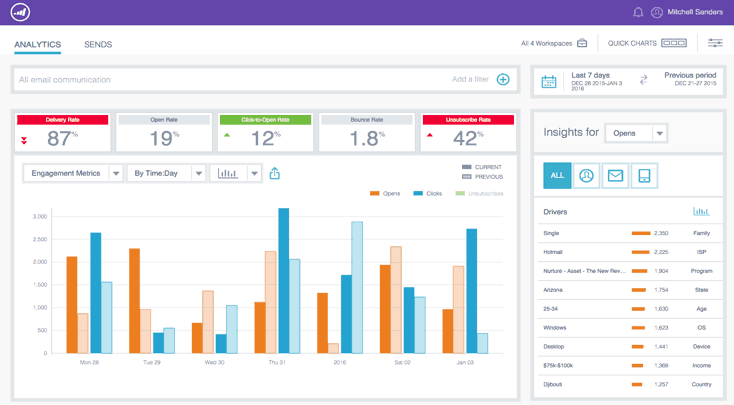We all know what it feels like to subscribe to a brand or website that we really like and quickly be turned off by the subsequent email campaigns that follow. Sure we wanted to see some emails, but getting them in highly frequent increments can be enough to take anyone from enthusiastic to annoyed.
According to Inc, citing a study by Campaigner, 49% of consumers say they receive too many marketing emails. So, what are we to do as business owners, marketers, or social media managers? How do we stay on our customer’s radar without overwhelming them?
There are a few important things to keep in mind regarding email campaigns, including the content you are creating, making headlines eye-catching, offering something of value and importance, and finally, yes, frequency. Sending too many emails can affect performance and inhibit your overall efforts.
Another study found that email campaigns with a high frequency of emails sent accounted for 73% of opt-outs and unsubscribes. One important aspect of email marketing to consider to make your time and money well spent, frequency has to be a focus. Below are a few ways to combat the issue while still maintaining healthy email campaigns.
I recently read an article that, while interestingly positioned, argued to communicate as much as possible through email campaigns to succeed as a successful business and boost sales. While this is a very tempting idea, over-communicating is a dangerous game to play when building your subscriber list and operating as a small independent business.
The key to successful email campaigns is to communicate when you have something to say, share, or that needs attention. Emails also need to be thought out and carefully planned. Before taking to emailing your list every single day, think about the following:
If you can confidently answer or consider those questions, it is a good time to reach out to your audience. Also, keep in mind that you should be able to say “yes” to all three questions. Sometimes you could have the most thoughtful messages every day, but would you really want to receive an email every day, no matter its content? In most instances, the answer is no.
Is there a magic number for email campaigns and marketing frequency? Truthfully, the frequency depends on various factors, including your industry, the size of your business, and how established your mailing list is. That said, it isn’t all guesswork.
A lot of studies on email marketing have been published, and it is pretty clear that to determine the exact frequency you should target (for your industry, audience, and size/scale—but especially based on specific email list insights), you should conduct a frequency test and really look at your metrics.
To set up a frequency test, you experiment with different factors, such as weekly vs. biweekly, and monitor and measure your metrics. By looking at the patterns where emails are performing better, you can plan and make a customized schedule for your business. For some industries, once a week (or yes, possibly, once a day in specific industries) works really well, and in some cases, once a month may be best. Below shows you how you might compare metrics in Marketo, for example:

According to HubSpot, there are five steps to start developing a frequency test:
The key to finding your magic number for email campaign frequency is to test your own list and get accurate feedback so you communicate an appropriate amount to your audience.
Once you determine the patterns for best email success with an email frequency test, you should maintain a regular schedule — this will allow you to keep an eye on metrics and see how things change as your list grows and changes over time.
Always offer customizable options. This rings true even if you feel you have found the magic number. One of the key tricks to keeping your audience and holding your email list strong is to offer customizable options. Based on what we have learned about email unsubscribes, just because the frequency you discover is ideal for most of your audience, there will always be some who want less correspondence in their inbox.
Consider offering choices when someone clicks “unsubscribe,” or considering gathering information so you give the user a voice and can create a better experience in the future.
Be flexible and continue to monitor. Once you conduct initial testing and review analytics to determine how often you should be sending your email campaigns, you will need to keep on top of analysis to see if your frequency needs to increase or decrease. As things change, remember to change your schedule and be consistent accordingly.
The reason that most articles cannot give you a specific answer or number for ideal email campaign frequency for not overwhelming or annoying your audience is because it is a unique answer for every business. Be very skeptical with blanket statements or one-size-fits-all approaches, such as emailing your audience every day to increase click-through rates.
Start by devising a hypothesis based on your industry and audience size and perform a frequency test. Once you have a target schedule to try, adjust your email campaigns accordingly as your list grows and continue to monitor your metrics.
What are your concerns about performing an email campaign frequency test? Have you tried one for your own email marketing strategy? Let us know what works for you in the comments section below.
